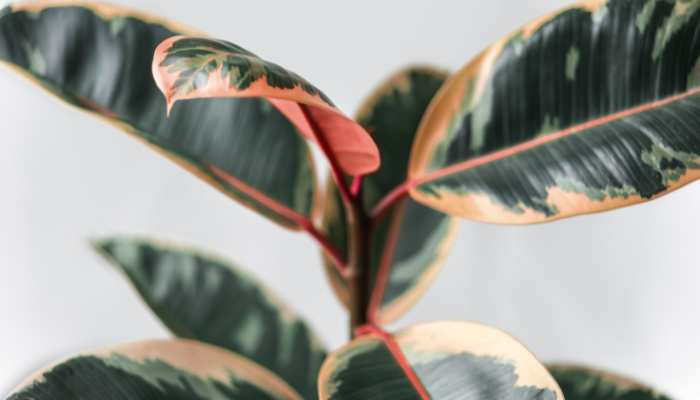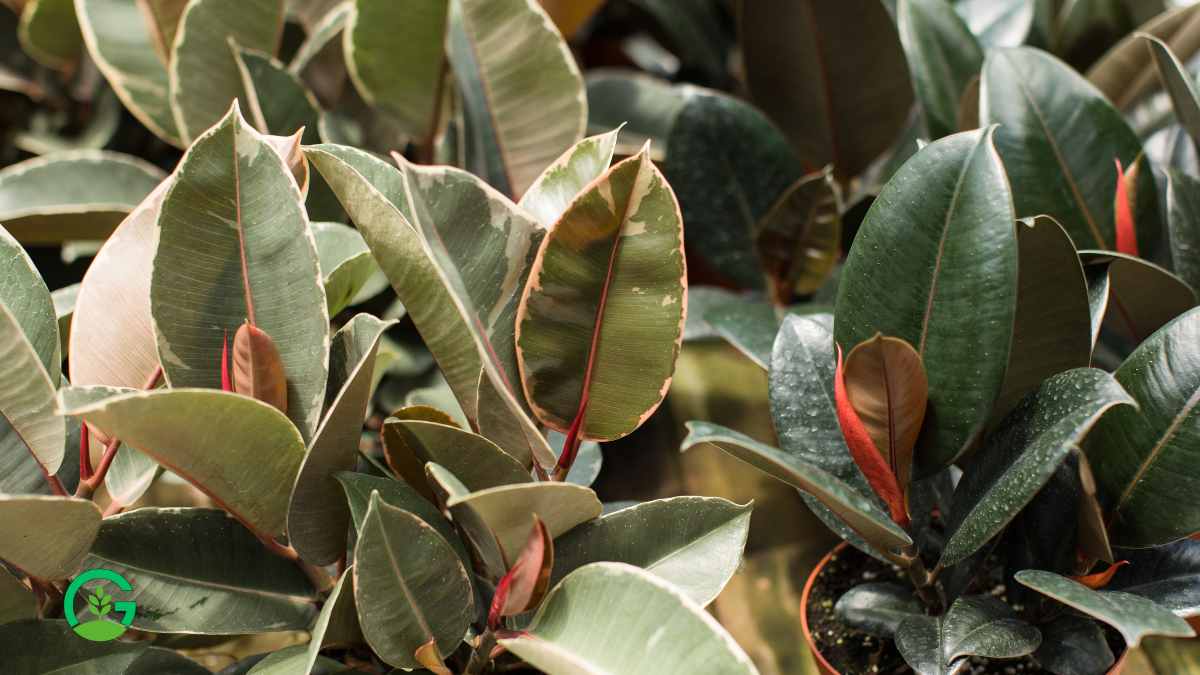Are you looking to add a touch of greenery to your living space? Variegated Rubber Plants are not only stunning to look at but also relatively easy to care for.
In this guide, we’ll walk you through everything you need to know to nurture these beautiful plants and watch them thrive in your home.
Table of Contents
Introduction
Variegated Rubber Plants, scientifically known as Ficus elastica, are popular houseplants known for their glossy leaves and air-purifying qualities. With the right care, these plants can thrive indoors, adding beauty and freshness to any room.

Understanding Variegated Rubber Plants
Variegated Rubber Plants are native to India and Malaysia, where they can grow up to 100 feet tall in their natural habitat. However, when grown indoors, they typically reach heights of around 6 to 10 feet. These plants feature large, thick leaves with striking patterns of green and cream, making them a visually appealing addition to any space.
Light and Temperature Requirements
Light: Variegated Rubber Plants thrive in bright, indirect light. Avoid placing them in direct sunlight, as this can scorch their leaves. If your plant starts losing its variegation, it may be a sign that it’s not getting enough light.
Temperature: These plants prefer temperatures between 65°F to 80°F (18°C to 27°C). They can tolerate slightly cooler temperatures, but it’s best to avoid drastic fluctuations.
Watering Needs
Frequency: Water your Variegated Rubber Plant when the top inch of soil feels dry to the touch. Overwatering can lead to root rot, so it’s essential to let the soil dry out between waterings.
Watering Technique: Ensure thorough watering by watering until water drains out from the bottom of the pot. Discard any excess water to prevent waterlogging.

Soil Requirements
Well-Draining Soil: Use a well-draining potting mix to prevent water from accumulating around the roots. A mixture of peat moss, perlite, and compost works well for Variegated Rubber Plants.
pH Level: Aim for a slightly acidic to neutral pH level (around 6.0 to 7.0) for optimal growth.
Fertilizing Tips
Frequency: Feed your Variegated Rubber Plant with a balanced liquid fertilizer once a month during the growing season (spring and summer).
Dilution: Dilute the fertilizer to half the recommended strength to avoid fertilizer burn.
Image | Product Name | Review | Price |
Pruning Techniques
Removing Dead Leaves: Regularly remove any dead or yellowing leaves to maintain the plant’s health and appearance.
Shaping: Prune your plant to control its size and shape. Trim back any leggy growth to encourage bushier growth.
Propagation Methods
Stem Cuttings: Variegated Rubber Plants can be easily propagated from stem cuttings. Simply cut a healthy stem below a node and place it in water or moist soil until roots develop.
Air Layering: Another propagation method involves air layering, where you encourage roots to form on a stem while it’s still attached to the parent plant.
Common Pests and Problems
Spider Mites: Keep an eye out for spider mites, especially in dry indoor conditions. Regularly misting the plant can help prevent infestations.
Overwatering: One of the most common problems with Variegated Rubber Plants is overwatering, which can lead to root rot. Ensure proper drainage and let the soil dry out between waterings.
Read More
Benefits of Having a Variegated Rubber Plant
Air Purification: Variegated Rubber Plants are excellent air purifiers, removing toxins like formaldehyde from the air and improving indoor air quality.
Aesthetic Appeal: With their striking foliage, Variegated Rubber Plants add a touch of natural beauty to any room, enhancing the overall aesthetic.
Variegated Rubber Plant Conclusion
In conclusion, Variegated Rubber Plants are an excellent choice for both novice and experienced plant enthusiasts alike. With proper care and attention to their needs, these plants can thrive indoors, providing beauty and health benefits to your living space.
Variegated Rubber Plant FAQs
How often should I repot my Variegated Rubber Plant?
Repot your plant every 1-2 years or when it outgrows its current pot size.
Can Variegated Rubber Plants tolerate low light conditions?
While they prefer bright, indirect light, Variegated Rubber Plants can tolerate low light conditions but may grow more slowly.
Are Variegated Rubber Plants toxic to pets?
Yes, Variegated Rubber Plants are toxic to pets if ingested. Keep them out of reach of curious pets or opt for pet-friendly plants instead.
How can I encourage my Variegated Rubber Plant to grow larger?
Regular pruning and providing optimal growing conditions, including ample light and proper watering, can encourage healthy growth in Variegated Rubber Plants.




















